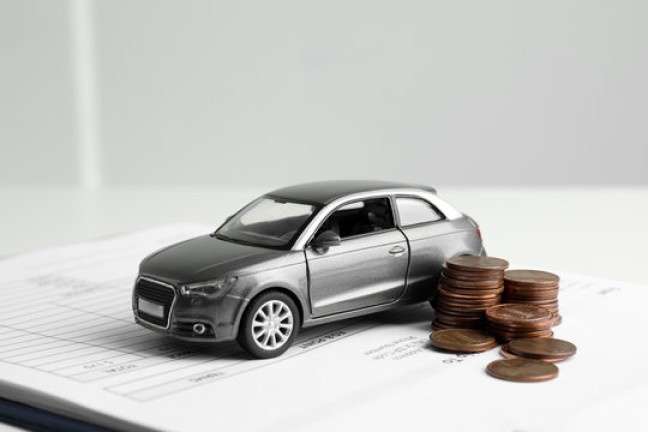Shipping a financed car overseas can seem daunting. As someone who has gone through this process, I can attest that it requires meticulous planning, detailed knowledge of regulations, and effective communication with multiple parties. This guide aims to provide a straightforward, step-by-step approach to help you confidently navigate this complex procedure.
Table of Contents
Understanding the Basics
What Does It Mean to Ship a Financed Car?
When a car is financed, you have taken a loan to pay for it, and the lender holds a lien on the vehicle until the loan is paid off. Shipping a financed car overseas adds a layer of complexity because you need the lender’s permission to export the vehicle. This is because the car is collateral for the loan, and lenders have a vested interest in ensuring that the asset remains within reach.
Why Ship a Financed Car Overseas?
People ship financed cars overseas for various reasons. You might be relocating for work, moving closer to family, or pursuing an adventure in a new country. Whatever the reason, understanding the steps involved will help make the process smoother and less stressful.
Step-by-Step Process for Shipping a Financed Car Overseas
1. Contact Your Lender
Understanding Lender Requirements
The first step is to contact your lender to discuss your plans. This is crucial because not all lenders allow their collateral to be removed from the country. When I called my lender, I found that they had specific requirements and paperwork that needed to be completed before they would grant permission.
Getting Written Permission
Request written permission from your lender. This usually involves filling out an application to modify the loan agreement to include the vehicle’s export. Ask about any additional fees or insurance requirements that might apply. This written permission is essential as it will be needed at various stages of the shipping process.
2. Research Shipping Companies
Finding Reliable Shippers
Not all shipping companies handle financed vehicles, so finding one with experience in this area is important. Look for companies with good reviews and a track record of successfully shipping funded cars. I spent significant time reading reviews and comparing services before choosing a shipping company.
Getting Quotes
Get quotes from multiple shipping companies to compare costs and services. Ask about their process for handling financed vehicles and any required documentation. This will help you make an informed decision and avoid any hidden fees.
3. Prepare the Necessary Documentation
Required Documents
The paperwork required to ship a financed car overseas can be extensive. You’ll need the following documents:
- Original Vehicle Title: This shows proof of ownership. Since the lender holds the title, you’ll need a notarized letter from the lender authorizing the export.
- Shipping Invoice: Provided by the shipping company.
- Bill of Lading: A receipt issued by the shipping company details the shipment.
- Export Declaration: Required by the U.S. Customs and Border Protection (CBP).
- Lienholder Authorization Letter: A letter from your lender permitting the export.
Ensuring Accuracy
Ensure all documents are accurate and complete. Mistakes or missing information can cause delays and additional costs. When I went through this process, I double-checked each document multiple times to avoid any issues.
4. Coordinate with U.S. Customs
Filing with U.S. Customs
You must file the necessary paperwork with U.S. Customs and Border Protection (CBP) at least 72 hours before the vehicle’s departure. The CBP will review your documents and, if everything is in order, will approve the export.
Attending the Inspection
Sometimes, CBP may require a physical inspection of the vehicle. Be prepared to take your car to the port for this inspection. During my shipment, CBP did request an inspection, which required me to be present at the port with all the necessary documentation.
5. Prepare Your Car for Shipping
Vehicle Inspection
Before shipping, conduct a thorough inspection of your vehicle. Document any existing damage with photos and a written record. This will be useful if there are any disputes about the car’s condition upon arrival.
Clean and Empty Your Car
Clean your car inside and out, and remove all personal items. Shipping companies usually require this to prevent any damage or loss. I emptied my car and took pictures to document its condition before handing it over to the shipper.
6. Choose the Right Shipping Method
Roll-On/Roll-Off (RoRo) Shipping
This is the most common and cost-effective method for shipping cars overseas. Your vehicle is driven onto a specialized ship and secured for transport. However, it offers less protection compared to container shipping.
Container Shipping
If you prefer more protection, you can opt for container shipping. Your car will be loaded into a container, which offers additional security against weather and potential damage. Although more expensive, I chose container shipping for the added peace of mind.
7. Insurance and Tracking
Insurance
Ensure your car is adequately insured for the journey. Check with your lender to see if they have specific insurance requirements. I opted for additional insurance coverage provided by the shipping company to cover any potential damages during transit.
Tracking Your Shipment
Most shipping companies offer tracking services. Use them to monitor the progress of your shipment and stay informed about its location and estimated arrival time. Tracking gave me peace of mind, knowing where my car was at all times.
8. Receiving Your Car Overseas
Customs Clearance
Once your car arrives at its destination, it will need to clear customs in the new country. Be prepared to provide the necessary documentation and pay import duties or taxes. I researched the customs requirements of my destination country in advance to avoid surprises.
Inspection and Registration
After clearing customs, inspect your car to ensure it arrives in good condition. Then, proceed with registering your vehicle in the new country. This often involves obtaining a local license plate and meeting any safety and emission standards required by the destination country.
Conclusion
Shipping a financed car overseas from the USA is a complex process, but it can be successfully managed with careful planning and attention to detail. By following the steps outlined in this guide, you can ensure a smooth transition for your vehicle to its new destination. From obtaining lender permission to choosing the correct shipping method and preparing the necessary documentation, each step is crucial. My experience taught me the importance of thorough preparation and effective communication. If you’re considering shipping your financed car overseas, start planning early and stay organized to successfully navigate this challenging but rewarding process.
For further information, refer to U.S. Customs and Border Protection and consult with your lender and chosen shipping company.





